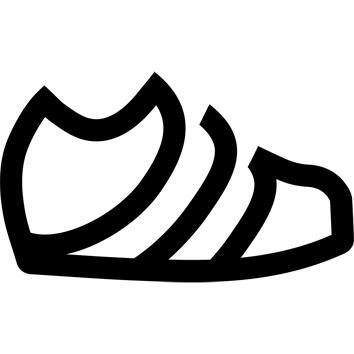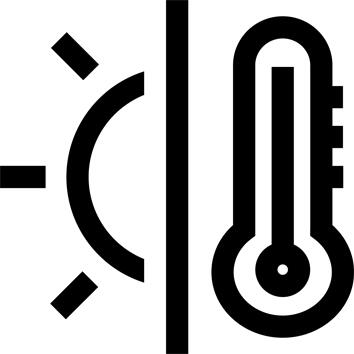Shoes
Thin liner (last 100mm), light liner: Lightweight, comfortable liner without thermoforming. Preformed foam at malleolus level. The liner has been designed to optimize skiability, weight and freedom of movement on descents.
Thermoformable liner for even greater comfort.
Shock Absorber Area system in the heel to absorb shocks in bumps or jumps.
What's flex?
To give an indication of the shoe's rigidity, brands define a flex index for each shoe. The higher the value, the stiffer the shell. A flex of 70 is considered suitable for intermediate to advanced skiers. A flex of 70 to 90 is for advanced skiers. Beyond that, products are aimed at experts. However, larger skiers can move up a level.
How do I try on a ski boot?
Once the foot is in the shoe, close the hooks halfway. Can you go any further? This means that the shoe's volume doesn't suit you. Once your shoes are closed, perform 3 large flexions by pressing hard on your shins (put your hands on your knees) to move your heel back into the shoe. Stand up straight: you should be able to touch the tip of the shell. When flexing, your foot should move backwards and you should no longer be able to feel the toe.
How do I easily put on ski boots?
Pull the tongue towards the front and outside of the feet: this opens the shell generously and makes fitting much easier.
Suitable for freestyle
By fitting the standard alpine insoles (supplied with the boots), these boots can also be used for freestyle skiing.
How do I change my hiking insoles for alpine insoles?
Timing: 15 minutes
1/ Unscrew the screw on the heel pad insert.
2/ Unscrew the 3 screws on the heel pad and pull it out backwards. Be careful not to lose the small black shim.
3/To avoid losing the heel block insert, remember to screw it back in.
4/ Position and screw in the alpine heel block.
5/ Unscrew the 4 front stop screws.
6/ Remove the stop by pushing it forward. Be careful not to lose the small black shim.
7/ Position and screw in the front stop.
Weight
Shoe weight with ''low tec'' inserts:
22/22,5 - 1564g
23/23,5 - 1627g
24/24,5 - 1690g
25/25,5 - 1785g
26/26,5 - 1848g
27/27,5 - 1915g
28/28,5 - 2064g
29/29,5 - 2124g
30/30,5 - 2187g
How to optimize ski boot comfort?
There are many ways to optimize foot comfort in a ski boot. A ski boot should be close to the foot. To improve support, there are insoles adapted to the shape of your arch, volume reducers and heel risers.
How to keep your feet warm?
Often overlooked, drying the liner is the most important step in keeping feet warm. Even at -10°C, the foot perspires and the liner can't dry on its own in its plastic shell, even over several days. Ideally, you should take them out every day. You can also use shoe dryers, which are much more practical, as you don't need to take the slipper out - just plug them in!







